16 Sept 2025
8 MIN READ
What Is the Story Behind Labubu Dolls?
Summary
Labubu dolls, created by artist Kasing Lung and popularized by Pop Mart, have become a global collectible trend. Inspired by folklore and storytelling, they thrive on blind box excitement, social media buzz, and celebrity influence. Despite controversies in some countries, Labubu continues to expand worldwide through savvy marketing, cultural collaborations, and strategic retail growth.
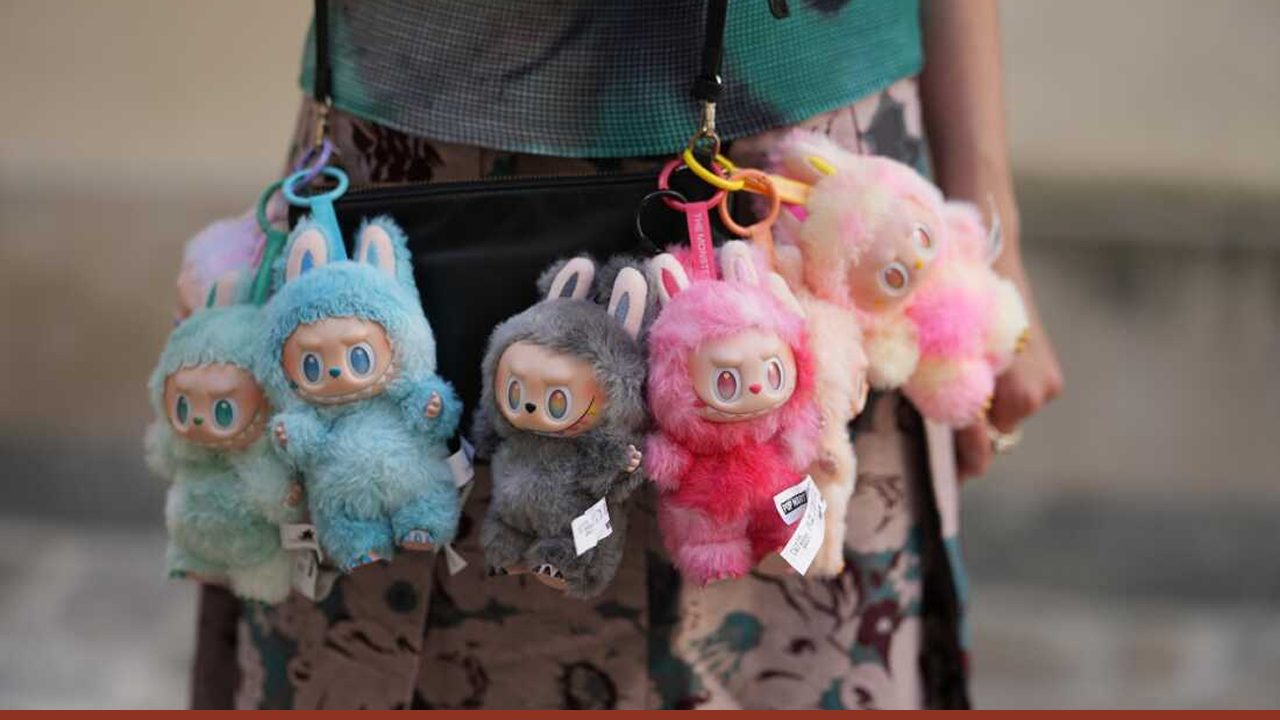
Much of the dolls’ popularity has been credited to Blackpink (and White Lotus) star Lisa, who has been one of the most prominent Labubu fans. Credits: Getty Images
The Origin of Labubu Dolls
Labubu is a unique character created by Hong Kong-born artist Kasing Lung, who moved to the Netherlands as a child. His multicultural upbringing exposed him to both Asian traditions and Nordic and European folklore, which deeply inspired his playful, mischievous designs. Labubu first appeared as part of Lung’s “The Monsters” story series, and is characterized by its quirky, elf-like appearance and toothy grin, an intentional blend of “ugly-cute” charm that has sparked debate among fans and critics alike.
Each Labubu figure has its own distinct personality, often reflecting storybook traits and individual quirks that connect emotionally with collectors. Alongside Labubu, other favorites include Zimomo, a cute, sleepy-eyed creature, and Tycoco, which stands out for its round shape and tropical vibe. Lung has prioritized storytelling so that every design is more than just a toy, but a character from a vibrant, imaginative world.
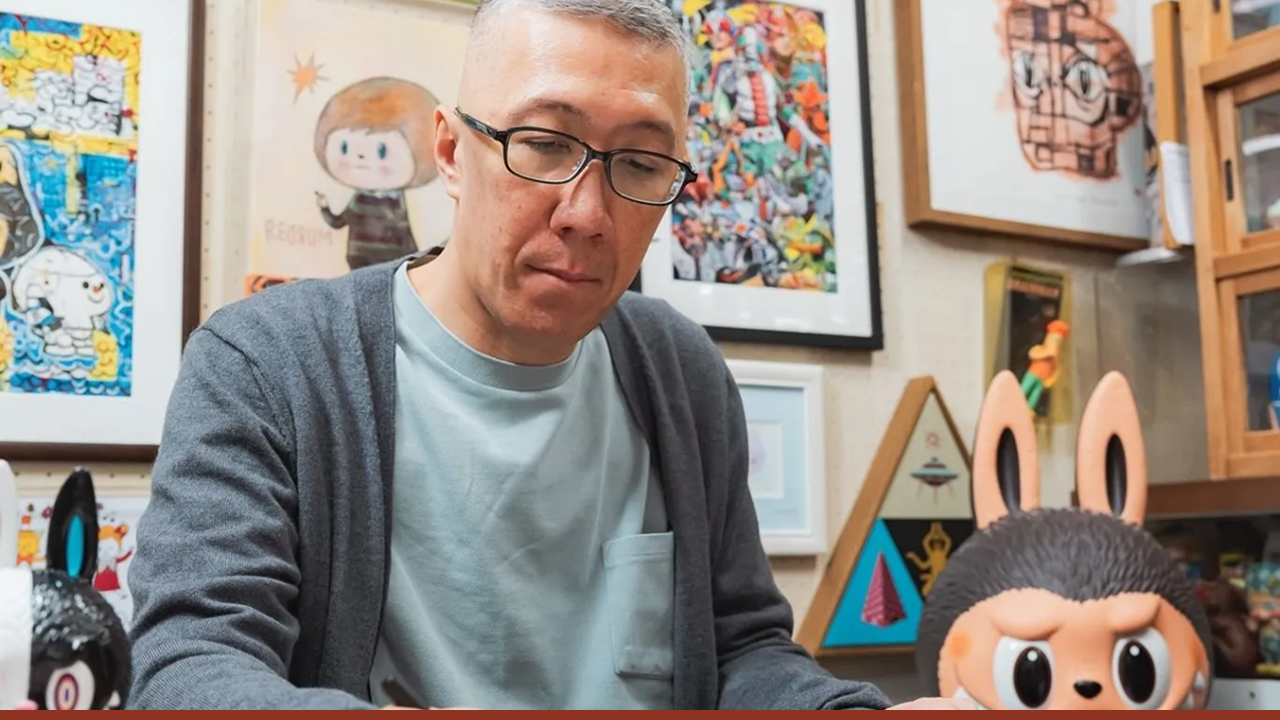
Lung said when he was a kid, there were no computers or gaming consoles, so he had to draw dolls with a pen. Credits: Prestige
Pop Mart, a leading company in the designer toy industry, partnered with Lung to produce and globalize Labubu dolls. Pop Mart’s global marketing, themed retail stores, and strategic partnerships helped Labubu become a viral sensation in 2024-2025. Labubu now accounts for a large percentage of Pop Mart’s revenue.
Celebrity endorsements from stars like Rihanna and K-pop icons sparked a viral sensation, creating long queues at Pop Mart stores worldwide. This blend of accessibility, exclusivity, and star power turned Labubu into a global cultural phenomenon and coveted collectible.
Labubu’s popularity surged in China in 2022 amid a post-pandemic embrace of “anti-perfectionism,” celebrating quirky imperfections over polished looks. Priced affordably between $18 and $70, their exclusivity and blind-box surprise element fueled widespread appeal.
The Blind Box Phenomenon
Blind box packaging is a cornerstone of modern toy collecting, and the Labubu series fully embraces this exciting style. In a blind box, buyers don’t know which figurine they’ll get, adding an element of surprise that turns collecting into a thrilling treasure hunt. Fans chase rare or limited-edition figures and trade with others to complete their sets, making collecting both social and rewarding.
Labubu offers a wide variety of collectible figurines, each with unique details, themes, and designs, from classic looks to seasonal editions and special collaborations. These enrich the imaginative world of The Monsters, attracting collectors with the artistry and rarity of each piece.
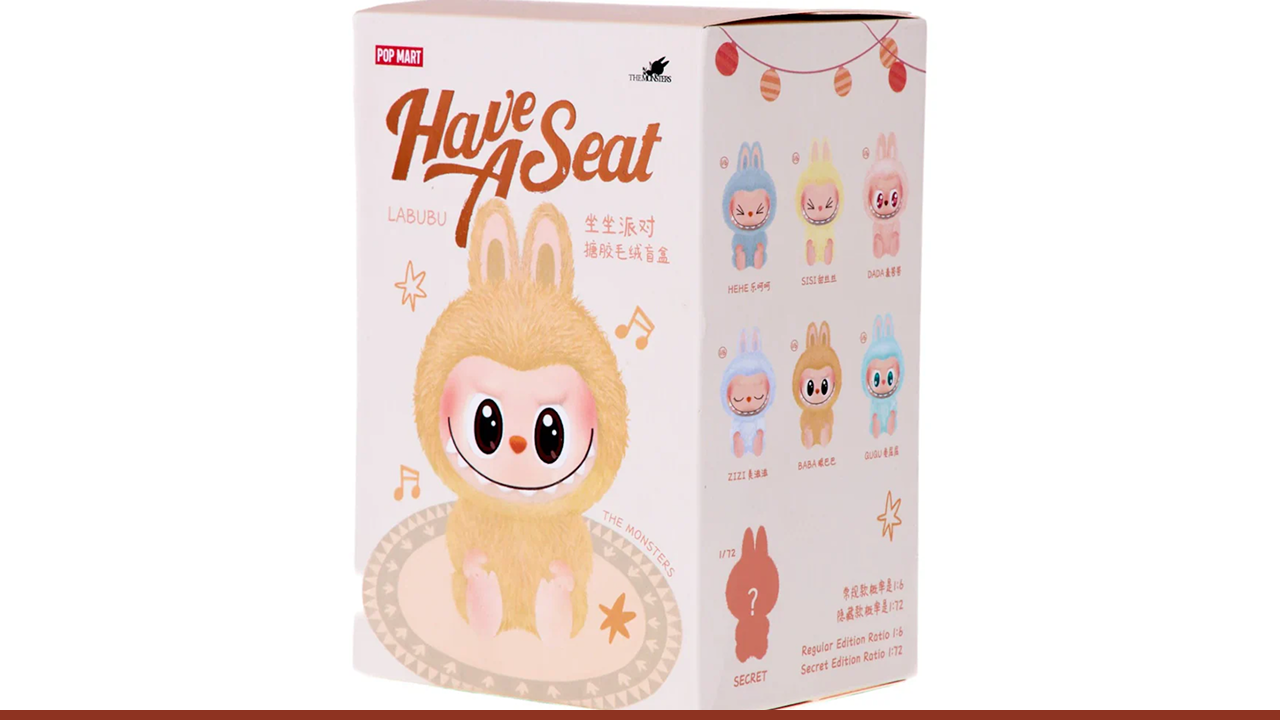
The vinyl faces of the Labubus are attached to plush bodies, and come with a signature look - pointy ears, big eyes, and a mischievous grin showing exactly nine teeth. Credits: Soleplier
The blind box concept isn’t new; it traces back to Japan’s “gachapon” capsule toys in the late 1960s and ‘70s. Even brands like McDonald’s have used mystery packaging in kids’ menus for decades, making blind boxes a proven, enduring way to engage and delight collectors.
Cultural Significance and Controversies Surrounding Labubu Dolls
Some cultures have warmly embraced Labubu dolls, while others remain cautious. In Thailand, for example, Labubu taps into a cultural tradition surrounding kuman thong, household spirit amulets believed to bring luck and protection, blending folk beliefs with Buddhist practices. However, concerns about Labubu dolls have surfaced in countries like the UK, Russia, and Iraq.
In the UK and the US, authorities have issued warnings about counterfeit dolls posing choking and toxic risks, as fake versions flood the market. Russian lawmakers have considered banning Labubu due to fears that their unsettling appearance might negatively impact children's mental health, especially because the packaging lacks Russian-language labels.
Similarly, Iraq’s Kurdistan Region banned and confiscated thousands of dolls amid claims they contain "demonic spirits" affecting children’s behavior, though no scientific proof supports these allegations.
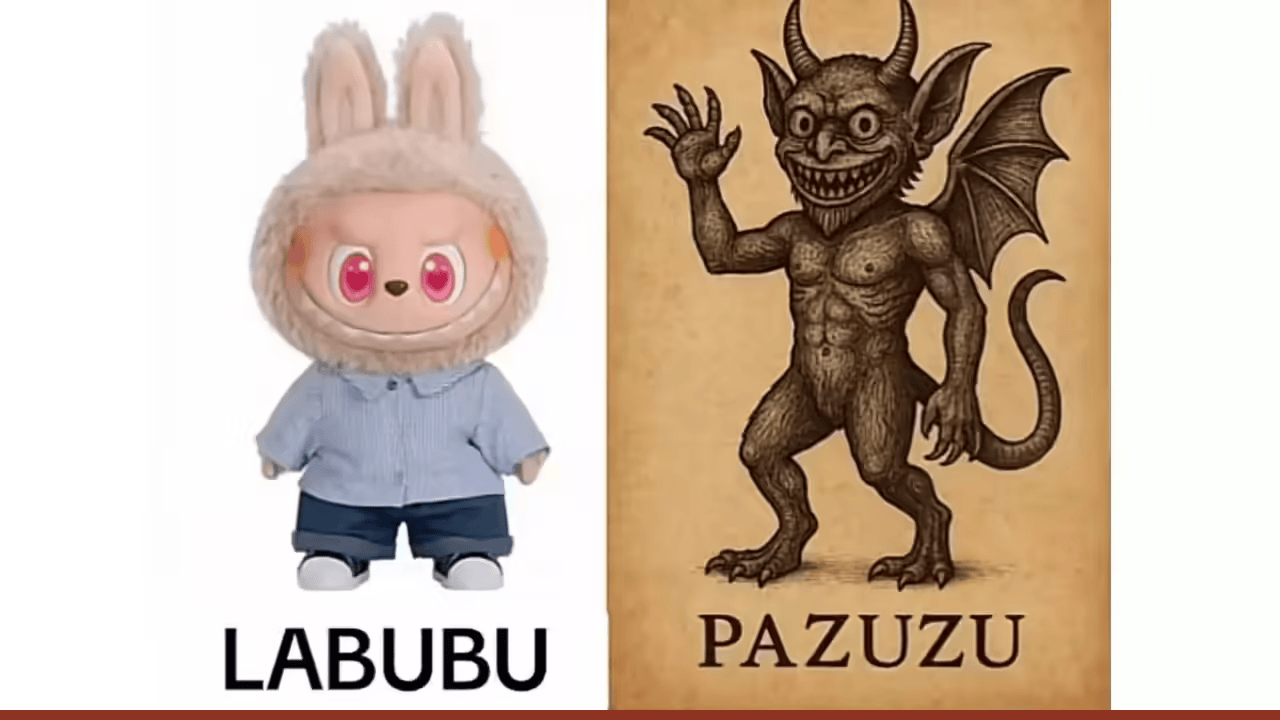
A viral claim linked Labubu dolls to the ancient demon Pazuzu, causing fear. Credits: Reddit
Online conspiracy theories link Labubu’s sharp-toothed grin to Pazuzu, an ancient Mesopotamian wind demon made famous in pop culture, yet fact-checkers confirm no connection exists. The creator, Lung, bases Labubu on Nordic folklore; Pazuzu was historically a protective spirit, not an evil entity.
Marketing Success and Global Trend Spread
The marketing success of Labubu dolls is rooted in a savvy blend of physical product appeal and dynamic online presence, which has helped Pop Mart elevate Labubu into a global cultural phenomenon.
Initially a niche designer toy, Labubu gained worldwide popularity through social media platforms like Instagram, TikTok, and Xiaohongshu, where collectors share unboxing experiences, trading activities, and rare finds. The excitement sparked by blind box packaging, randomized, surprise-based sales, creates viral moments that fuel demand.
Influencer partnerships and fan-driven content amplify this momentum, turning Labubu into more than just a collectible: it’s a storytelling-driven cultural trend that resonates deeply with fans. Because of this digital-physical synergy, Labubu has significantly boosted both its market value and brand recognition, solidifying Pop Mart’s position as a major player in the global designer toy industry.
Expansion Plans and Future Collaborations
Pop Mart is looking to expand Labubu and The Monsters series. The company has seen its reported revenue grow by over 200% and its net profit nearly double year-over-year, mainly due to Labubu’s rising popularity. Labubu’s are projected to be a billion-dollar business by the end of the year.
International sales are almost on par with the domestic ones. New markets are opening in the Middle East, Central Europe, Latin America, and the US. Pop Mart plans to launch 10 more stores in America by year-end and expand into emerging regions, such as Saudi Arabia and the UAE.
One of the most significant parts of this plan involves placing vending machines in over 30 countries. The blind boxes will also be placed in locations around the world, including airports, shopping centers, and busy urban areas. These machines will play their part in bringing the product to its worldwide fans.
Pop Mart is increasing Labubu’s cultural presence with brand partnerships. Collaborations with companies like Coca-Cola have created themed Labubu designs. These designs blend pop culture icons with Kasing Lung’s distinctive style. This strategy appeals to both designer toy enthusiasts and mainstream audiences.
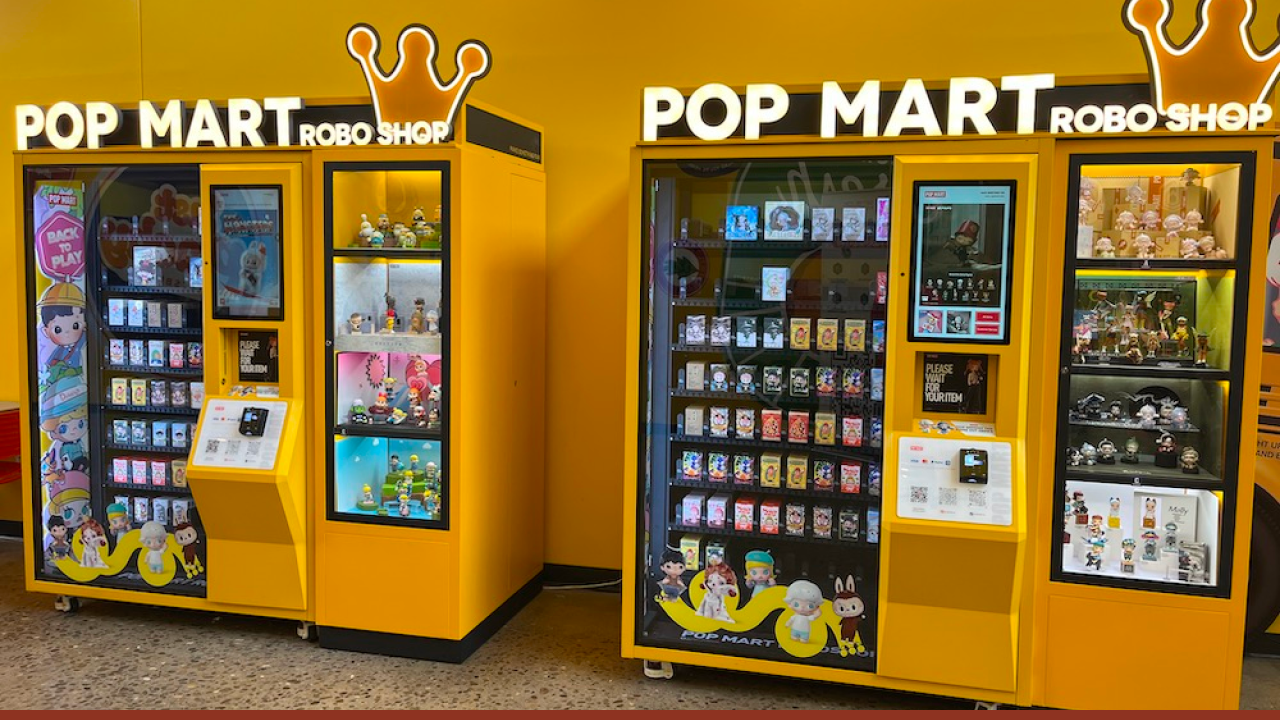
The Chinese company behind the Labubu franchise has sold $670M worth of related products this year, more than iconic US toy lines Barbie and Hot Wheels. Credits: Natalie Rodriguez
Exclusive releases at museums and art shows have changed Labubu from a fun figurine into a recognized contemporary art piece. Limited-edition items from these events often become highly sought after in the resale market. This enhances the brand’s premium image.
Conclusion
Labubu’s journey from Kasing Lung's storybook character to a global collectible shows the growth of Chinese cultural influence in toys. Pop Mart utilizes blind box packaging, social media buzz, and innovative partnerships to make Labubu a global phenomenon. The brand seamlessly combines nostalgia with modern trends, incorporating elements such as mystery, exclusivity, and vibrant design. This combination makes Labubu both a cultural icon and a commercial hit. Each release gives fans a blend of familiarity and surprise, keeping interest alive.
As Pop Mart grows globally, Labubu’s story is a testament to how creativity and marketing can turn an obscure toy into a worldwide symbol. By providing both wide access and exclusive items, Pop Mart is well-positioned for lasting growth while keeping the creativity that collectors love.
People Also Ask
What is the big deal behind Labubu dolls?
It is a combination of their charm and the fact that they are hard to miss.
What is the dark secret of Labubu?
There isn’t a dark secret behind them. They are just conspiracies made up because some people say they look demonic.
Are Labubu dolls demonic?
No, they are not. They come from the Mesopotamian folklore. It’s just a toy.
Is Labubu real or fake?
Labubus come with official branding and packaging, and each figure comes with Pop Mart tags and artist attribution.
Why are people obsessed with Labubu?
Psychotherapists suggest that the toys' popularity is driven by their scarcity and trending status, which may be a contributing factor.
